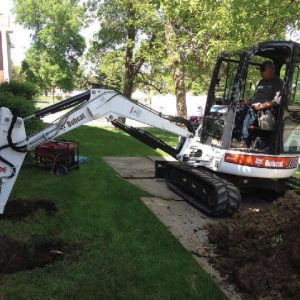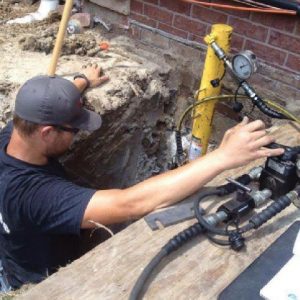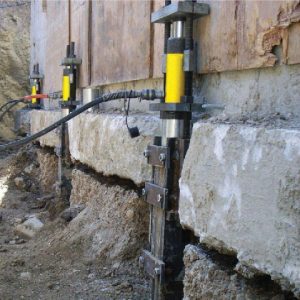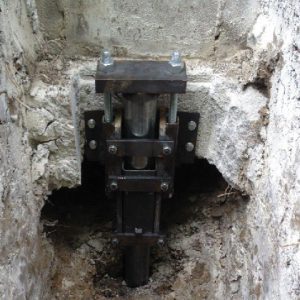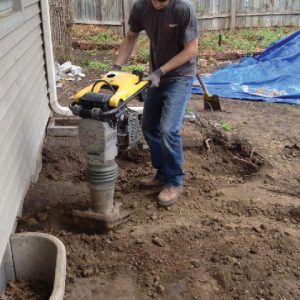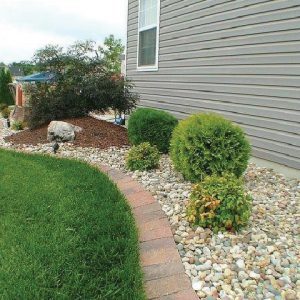What is a Push Pier?
A push pier is a repair solution designed to stabilize settled foundations. The push piers are driven into the ground until they reach a stable soil layer. Once they’re in place, a synchronized hydraulic lifting system raises the foundation to maximum practical level or as much as possible without causing damage.
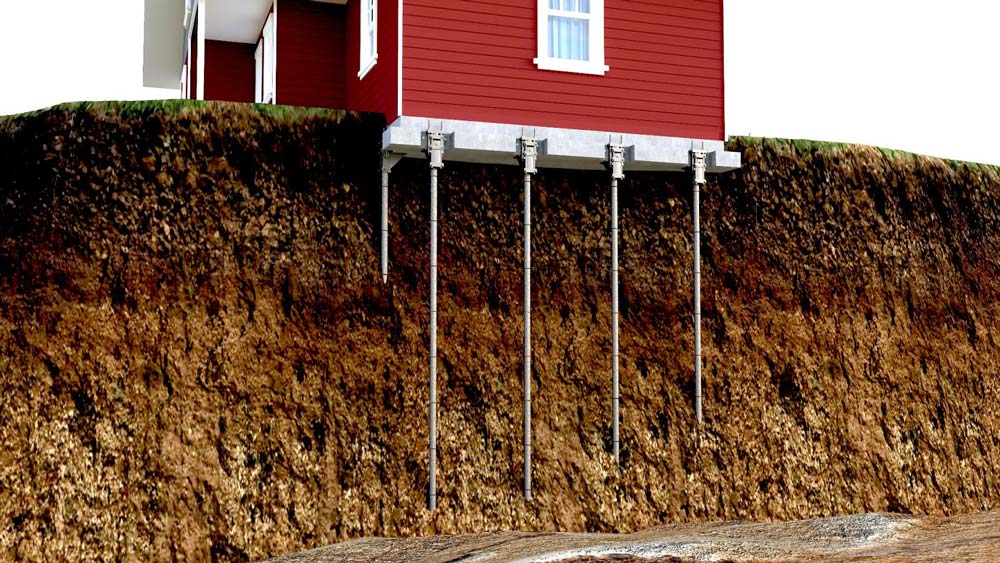
Foundation Underpinning with Steel Push Piers
Home foundation settlement is an unfortunate fact of life. Finding out your home is settling can seem like a hopeless situation. How can you fight mother nature? While it may seem hopeless at first, don’t lose any sleep over it. The good news is foundation settlement can be combated.
Foundation underpinning using American-made steel push piers…
- Permanently stops foundation settlement
- Is quick and minimally invasive
- Can be done from the inside or outside of the foundation
- Produces immediately noticeable results
The steel push piers Epp Foundation Repair uses in foundation underpinning come with a lifetime transferable limited warranty.
How Are Push Piers Installed?
Are Push Piers Better Than Helical Piers?
Although both types of piers are effective ways to stabilize and lift sinking foundations, one may be better suited for your specific circumstance.
Push piers, also known as resistance piers, are long steel tubes that are hydraulically driven through unstable soil until they reach a solid stratum. They are then attached to the foundation to lift and stabilize the home.
Helical piers, on the other hand, look something like giant corkscrews. They’re made up of steel shafts with helix plates that are screwed into the ground until they reach a stable stratum. Helical piers are typically used for lighter structures, including decks and smaller homes, but can also be used for larger buildings.
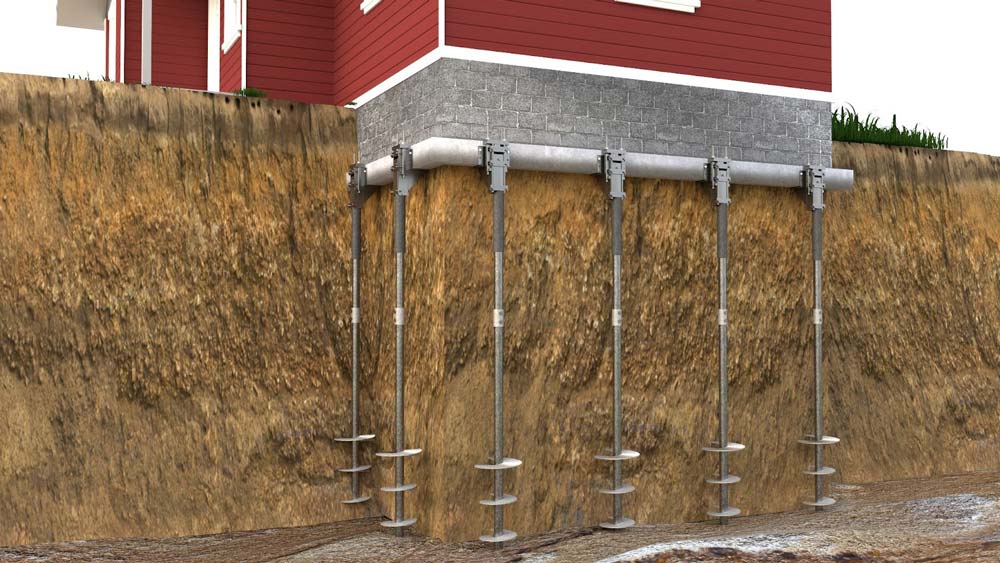
So, are push piers better than helical piers? It ultimately depends on your unique situation.
Causes of Foundation Settlement
- Evaporation – Hot and dry conditions can cause soil to pull away from the foundation. Settlement due to this foundation moisture imbalance can cause cracks throughout the surface.
- Transpiration – Tree roots can dehydrate the soil beneath the home, causing soil shrinkage.
- Plumbing Leaks – Water from leaky plumbing is often a significant contributor to foundation problems, including heaving.
- Drainage – Improper drainage will lead to excess moisture build-up, which could erode or consolidate soils. If the soil around the foundation is expansive, excessive moisture may cause heaving.
- Site Preparation – Cut and fill places where soil is removed from part of the building site and stacked onto another.
Epp Foundation Repair and Waterproofing Services
Epp Foundation Repair offers the following foundation repair services:
- House leveling using push piers and helical piers
- Basement wall repair using c-channel wall anchors, wall plate anchors, carbon fiber wall straps, basement i-beam wall support, helical wall anchors (tiebacks), epoxy basement wall crack repair
- Crawl space repair (pier and beam foundation repair) including crawl space support jacks and crawl space encapsulation.
Our Service Area
Epp Foundation Repair offers foundation repair services in areas of Nebraska, Iowa, Kansas, and Missouri. For more information about our service area, see our Service Areas page.




